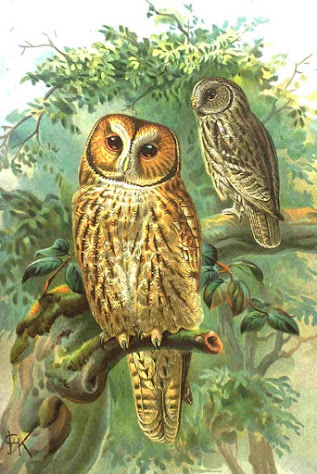Refugia, the origin of species, and global climate change…
About 22,000 years ago, the last glacial period was at its peak, in Europe, vast geography, covering Scandinavia, northern Germany, Denmark, Poland, as well as much of the UK, was covered by miles of ice. Climate conditions forced many species to search for more favorable geographical locations for living, called “refugia”. The Iberian peninsula, Italy, the Balkans, Thrace, and Anatolia were places containing refugia that allowed these species to survive in difficult times.
The glacial refugia in these four geographic regions were largely isolated from each other during the Last Glacial Maximum. For this reason, some of the species settled in these refuges have created genetic lineages different from each other. As a result of the last ice age losing their influence over the past 18,000 years, the species left from the refugia have colonized Europe again. Thus, the species distribution patterns that we see today have emerged. Therefore, it is plausible to say that glacial refugia were one of the most important genetic sources for today’s biological diversity.
In the beginning, studies to locate glacial refugia were based on studies on distribution patterns of species. With the advances in molecular biology, especially after the discovery of the polymerase chain reaction, the use of geographic variation at the DNA level to explain the distribution patterns of the species has become very popular and the focus of many evolutionary studies. In fact, these studies revealed the hidden story in DNA. These studies later confirmed the presence of glacial refugia in southern Europe for many species, from invertebrates to vertebrates and even plants.
The grasshopper (Chorthippus parallelus) is the best example. DNA data from the Northern European populations of this species are similar to the populations in the Balkans and Anatolia. This result confirms that most of the species’ distribution area in Europe originates from the Balkans and Anatolia. Accordingly, ancestral populations in the Balkans and Anatolia played an important role in the formation of the distribution pattern and genetic diversity that this species displays today. The interesting thing is that the gene flow between Anatolia and the Balkans continues today. Consequently, the Bosphorus has not become a geographic barrier for this grasshopper species. Details can be seen in the paper published in the Journal of Biogeography.
Birds and mammals show interesting colonization patterns after the Last Glacial Maximum. Birds and mammals have interesting colonization patterns after the Last Glacial Maximum. Although the species of hedgehog that spread in Western Europe (Erinaceus europaeus) and Eastern Europe (Erinaceus concolor) can be separated in small morphological differences, the molecular differences between them are remarkably deep. Based on this result, the colonization story of the two species across the European continent can be explained by geographically isolated glacial refugia. These refugia are also located in the Iberian peninsula, Italy, and the Balkans. Anatolia is considered to be another refugium for this mammal species.
A similar story was told in a study of the phylogeography of the tawny owl (Strix aluco). Three different refugia are defined in the Balkans, Italy, and Iberian peninsula for the tawny owl at the Last Glacial Maximum. One of the interesting points of the study is that the populations in the Iberian peninsula diverged from the populations in the Balkans and Italy a long time ago (about 400,000 years ago and 300,000 years ago, respectively). Another important point was the fact that the populations in the Iberian Peninsula did not leave this geography after the Last Glacial Maximum. In other words, ancestral populations in the Balkans and Italy were the source of the tawny owl population that spread on the European continent after the last glacial period. That is, the source of the genetic diversity of the tawny owls observed in Central and Northern Europe today came largely from populations in the Balkans and Italy. We don’t know what Anatolia’s role as a refugium was during the Last Glacial Maximum…
Another study showed that the ancestral populations of the brown bear (Ursus arctos) are located in the Balkans and Iberia during the Last Glacial Maximum. The interesting finding is that the brown bear’s populations in the low latitudes of the Balkans and the populations in Italy did not have a role in the colonization process in Europe after the Last Glacial Maximum.
According to previously published data, Italy is less likely to be a glacial refugium for the species have a widespread distribution including Northern Europe. The reason for this is that glaciers in the Alps prevented the emergence of species that could exit Italy immediately after the Last Glacial Maximum. Populations in the Iberian peninsula were weaker than the Balkans to colonizing Europe due to the Pyrenees Mountains. Therefore, the Pyrenees together with climate is a geographic barrier that has prevented species to colonize Europe after the Last Glacial Maximum.
As can be understood from these examples, the origin of the European species has been preserved in the Iber Peninsula, Italy, the Balkans, and (possibly) Anatolia during the Last Glacial Maximum. I believe that the importance of Anatolia is certainly high in the European phylogeographical patterns. Therefore, I want this to be handled in detail in the growing phylogeography literature. Interesting results are almost a certain fact, aren’t they?

Comments
Post a Comment